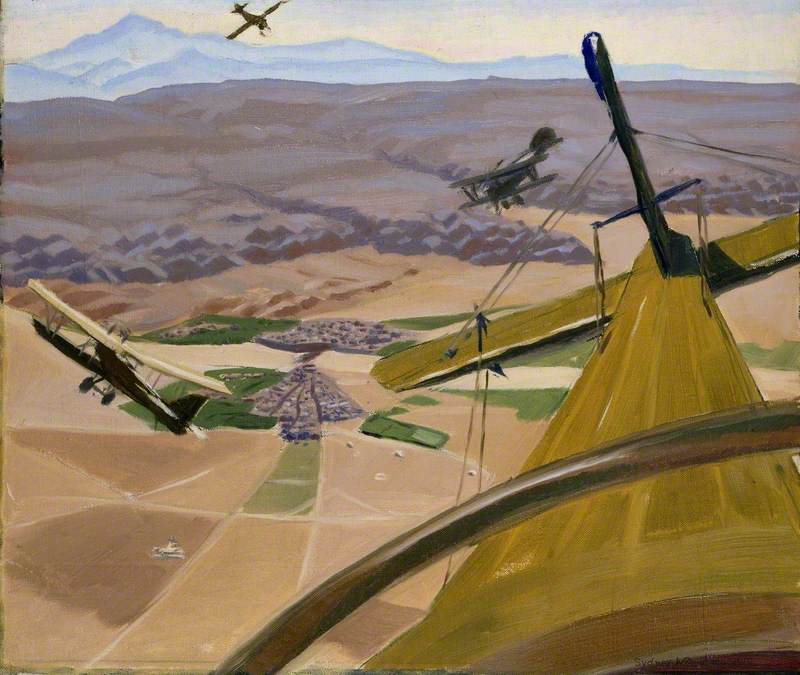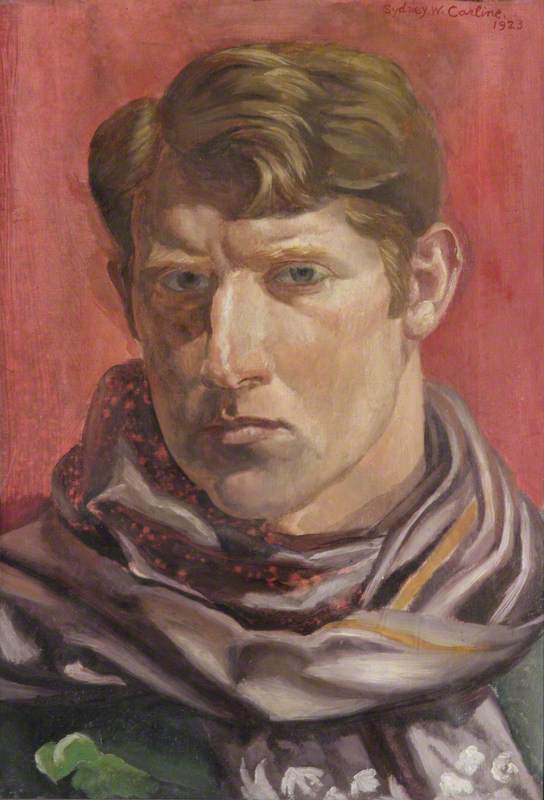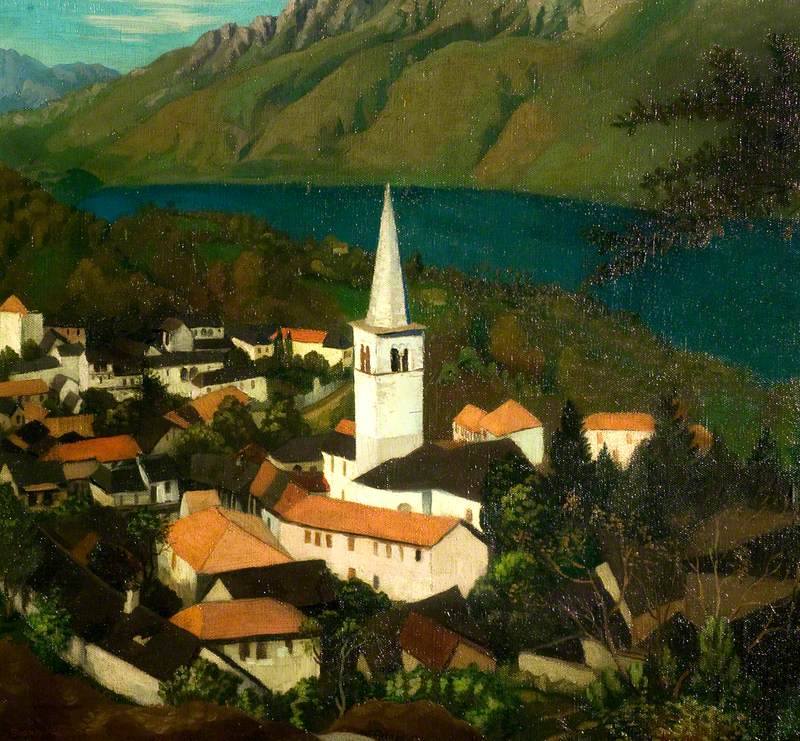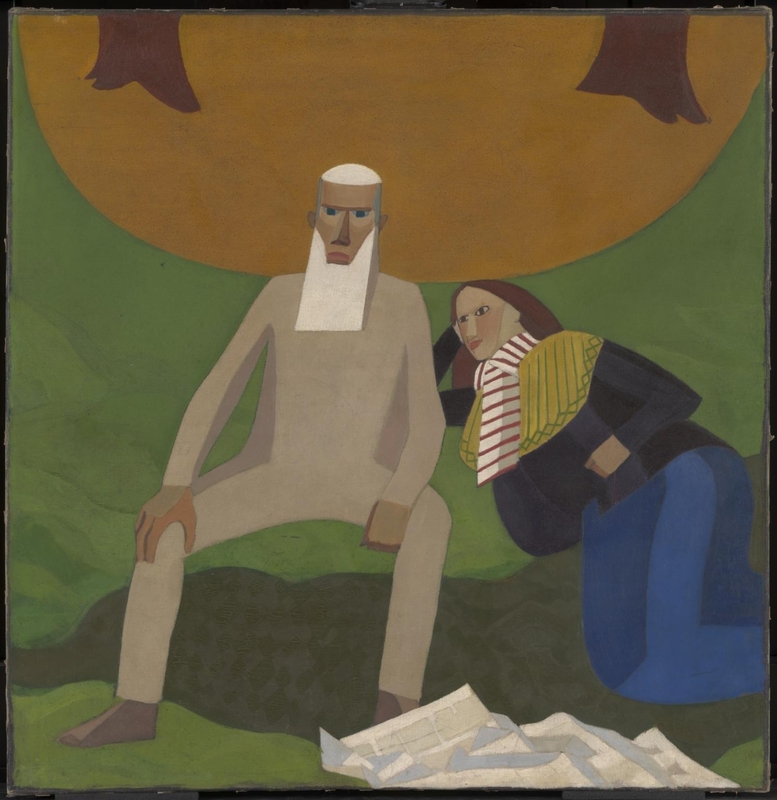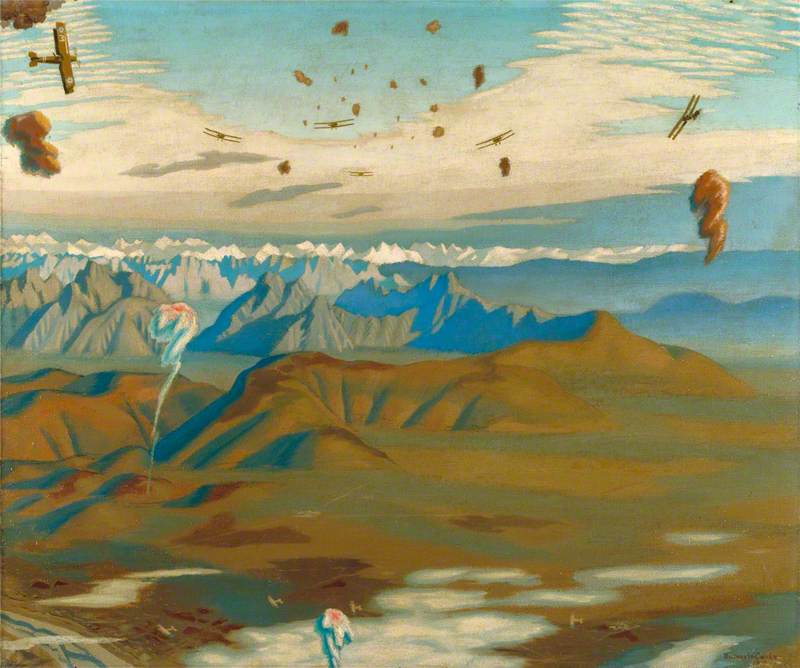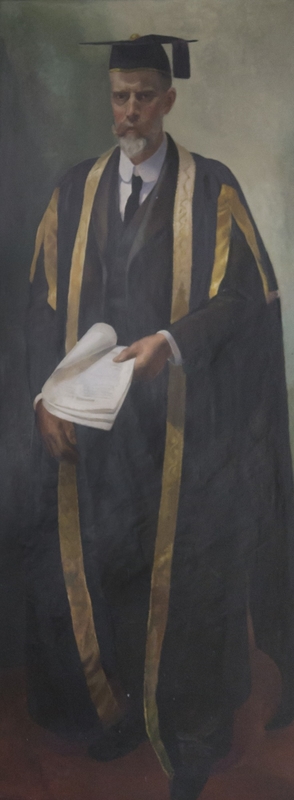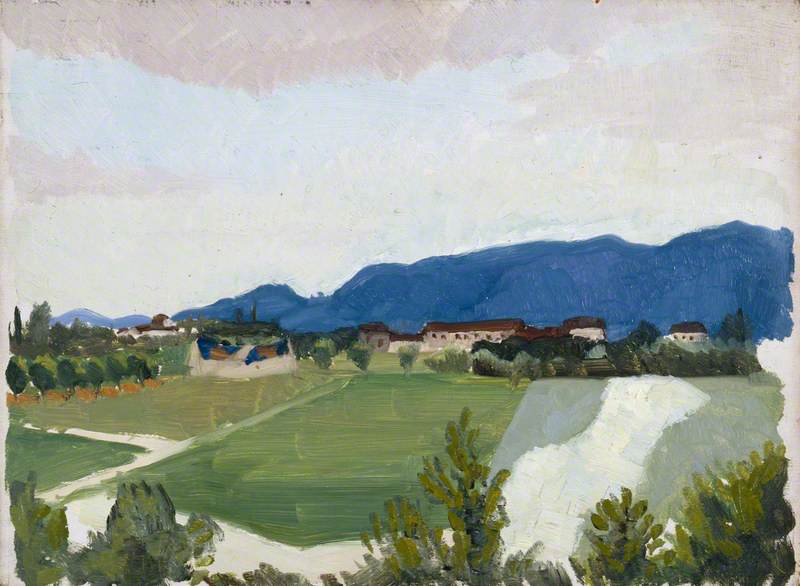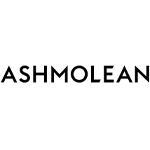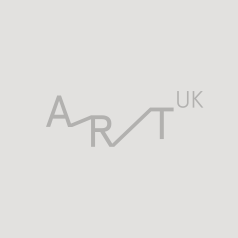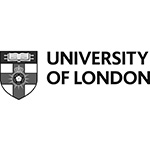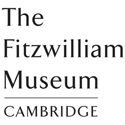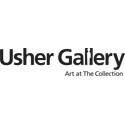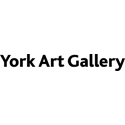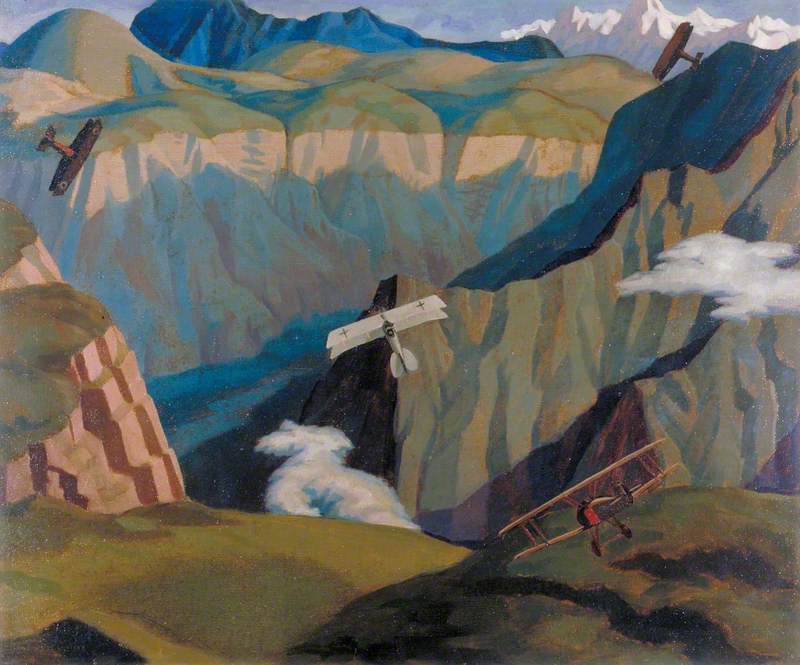
The Destruction of an Austrian Machine in the Gorge of the Brenta Valley, Italy 1918
Sydney William Carline (1888–1929)
IWM (Imperial War Museums)
Sydney William Carline was born in London, England on 14 August 1888 and studied under his father, the painter George Francis Carline (1855-1920); at the Slade School of Fine Art, University College London from 1907 to 1910; and in Paris. He subsequently worked as a painter, sculptor and medallist. During World War One, he served as a despatch rider before becoming a pilot in the Royal Flying Corps. Like his younger brother, the painter Richard Carline (1896-1980), he was also appointed an Official War Artist attached to the Royal Air Force. In 1922 he was elected a member of the London Group with whom he exhibited from 1922 to 1929. He also exhibited at the Grosvenor Gallery, Goupil Gallery, London Salon, New English Art Club, and Royal Academy in London; the Walker Art Gallery in Liverpool; Manchester City Art Gallery; and at the Royal Glasgow Institute of the Fine Arts.
Carline was Ruskin Master of Drawing at Ruskin School of Drawing, Oxford from 1922 to 1929.
In 1919 he travelled throughout the Middle East and subsequently provided illustrations for T.E. Lawrence's 'Revolt in the Desert' (London: Jonathan Cape, 1927).
His painting "Machines Leaving an Aerodrome (Italy)" was reproduced in Colour magazine May 1919 p. 88.
His work as a medallist included the Battle of Jutland bronze medal (1916); the Flanders Petrie Memorial Medal (1926); and the Mary Hill Memorial Medal (1927).
He lived in Oxford and London. He died on 14 February 1929 in Oxford from pneumonia which he reputedly contracted following a visit to the artist John Nash.
Text source: Arts + Architecture Profiles from Art History Research net (AHRnet) https://www.arthistoryresearch.net/
